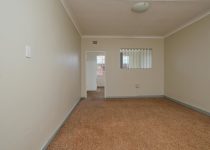Can You Create Curved Stacked Stone Walls Outdoors?
Yes, you can definitely create beautiful curved stacked stone walls outdoors! With proper planning and selection of suitable stones, you can achieve stunning results. Make sure to choose angular rocks with flat faces for better stacking and consider the wall's radius. Utilizing standard or cut panels will give you the flexibility needed for your design. Plus, incorporating plants can enhance the overall look. There's plenty more to learn about techniques and maintenance for your curved walls!
Table of Contents
Key Takeaways
- Curved stacked stone walls are feasible outdoors, particularly with standard rock panels designed for radii of 20 feet or more.
- Tighter radii may require cutting panels to ensure a proper fit on both convex and concave walls.
- Selecting angular, flat-faced stones reduces gaps and enhances stability for stacked constructions.
- Regular maintenance, including checking for voids and drainage issues, is essential for long-term wall integrity.
- Incorporating plants in natural pockets created by irregular stone placements enhances aesthetics and supports local biodiversity.
Understanding the Basics of Curved Walls
When you think about building outdoor structures, understanding the basics of curved walls is essential. Curved stacked stone walls require careful planning, especially when using stone panels.
For walls with a radius of 20 feet or more, you can use standard rock panel products. However, tighter radii need you to cut panels into smaller sections. Knowing the difference between convex and concave walls is crucial, as each type poses unique challenges in fitting the rustic stone.
To make installation easier, you might flip the panel orientation to highlight vertical lines. Lastly, ensure proper stacking techniques by filling voids with compacted materials and avoiding vertical joints on the wall face, which is vital for the stability of your curved stone walls.
Selecting the Right Stones for Your Project
Selecting the right stones for your curved stacked stone wall is crucial, as the materials you choose will directly impact the wall's stability and aesthetic appeal.
Opt for angular rocks with flat faces to ensure effective stacking. While ideal stones with six parallel faces are rare, aim for a mix of sizes and shapes that fit together tightly without gaps.
Choose durable, weather-resistant stones to withstand outdoor elements and ensure the longevity of your stone wall.
Consider the weight of the stones; heavier stones provide stability but may require extra effort during construction.
Lastly, make sure the stones complement your landscape and comply with local regulations regarding materials for outdoor features.
Techniques for Building Curved Stacked Stone Walls
Building curved stacked stone walls requires careful planning and execution to achieve both beauty and stability. Start by determining the wall's radius; for curves of 20 feet or more, standard panels work well. For tighter curves, cut panels into smaller sections, like 6×12 inches, to enhance flexibility. Remember to trim the fronts for concave walls and the backs for convex ones. Flipping panels to a vertical orientation can also change the visual appeal.
| Technique | Description |
|---|---|
| Use of Panels | Standard or cut panels for flexibility |
| Trimming | Adjusting edges for a tight fit |
| Orientation | Vertical positioning for visual effect |
| Proper Stacking | Filling gaps with compacted materials |
| Stability | Ensuring each stone fits snugly |
These methods make building stone retaining walls easy to use and maintain.
Maintenance and Stability Considerations
After you've successfully constructed your curved stacked stone wall, keeping it in top shape is vital for long-term stability.
Regular maintenance checks are essential to ensure the stones remain securely in place and that voids are filled, preventing shifting. Assessing proper drainage is crucial; without it, water accumulation can erode the structure and undermine its integrity.
Additionally, using compacted materials behind and beneath the stones provides a solid foundation, minimizing movement. Incorporating filling materials like stone dust or paver base helps maintain the wall by filling gaps and preventing soil erosion.
Lastly, be aware that as plant roots grow, they may exert pressure that affects alignment, so periodic reinforcement might be necessary to preserve stability.
Enhancing Aesthetics With Planting Opportunities
When you incorporate planting opportunities into your curved stacked stone wall, you not only enhance its visual appeal but also create a harmonious blend of nature and structure.
By designing your wall with irregular rock placements, you'll create natural pockets for soil, which can house a variety of plants. Consider using native herbs or flowering plants in these niches for added color and texture.
Mixing plants with varying heights can produce a dynamic landscape that complements the wall's curvature. With the right tools and a focus on natural stone veneer, you'll have multiple options to promote biodiversity while enhancing your garden's aesthetics.
This approach not only beautifies your space but also supports local ecosystems.
Frequently Asked Questions
How to Install Stacked Stone on a Curved Wall?
To install stacked stone on a curved wall, measure your radius, trim panels accordingly, and use a miter saw for clean cuts. Align everything with a level and don't forget to flip panels for better aesthetics.
Can You Curve a Retaining Wall?
Yes, you can curve a retaining wall. Just ensure you choose the right panel sizes and installation techniques. Proper foundation and stabilization are key to maintaining durability and preventing shifting over time.
How Do You Build a Stone Wall Outside?
To build a stone wall outside, select a site, dig a trench, stack angular stones tightly in courses, angle them back for stability, and finish with a solid capstone to enhance durability and appearance.
Can You Curve Stone Cladding?
Yes, you can curve stone cladding. By cutting panels into smaller sections and using proper tools, you'll achieve a snug fit on both convex and concave walls, enhancing your outdoor design with beautiful, flowing lines.



